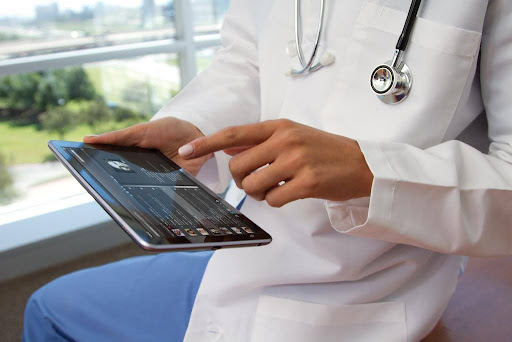The healthcare systems in some countries are at breaking point due to the ripple effects caused by the epidemic of coronavirus. Employees in modern healthcare are therefore aware of the importance of technology in the industry’s ability to perform efficiently.
Automating these processes can be life-saving in such precarious situations. Automating medical processes like EHR maintenance and billing, appointment scheduling and inventory management can reduce the amount of work that healthcare workers have to do.
We will examine the technological advances that have contributed to software development companies. Before we go any further, take a look at the following astounding statistics about the future importance of technology in healthcare.
Healthcare Statistics for the Future
- According to Smashing Boxes the Internet of Things in healthcare is expected to generate income of $135 billion by 2025, up from $24 billion.
- Accenture conducted a study which found that AI and machine learning have the potential to meet 20% of all clinical needs, reducing the number of times patients must check into the hospital.
- Accenture predicts that using AI in the United States healthcare industry will result in annual cost savings of $150 Billion by 2026.
- Statista projects that 353 millions people will use fitness apps by 2022.
New technologies reshaping the future of healthcare industry
The entire healthcare industry is undergoing a radical change as a result technological advances.
Continue reading to find out how technology is being used in the medical industry and what is to come.
1. Telemedicine is a growing field of healthcare software.
Telemedicine is one of the most effective ways to deliver medical care using technology. Its application and relevance has grown rapidly since the outbreak began.
Telemedicine is a field of medicine which allows doctors to treat patients remotely using a computer, tablet, or mobile device. There are three main categories of telemedicine: remote monitoring, storage and forward, and real-time interaction.
GlobalMed’s study found that 74% of millennials prefer to have their medical checks done via telehealth rather than in person. Telemedicine, when used more widely, would make it easier for those living in remote areas of the country to receive medical care.
Recent developments in technology in the healthcare sector, including telemedicine and Telehealth, are undoubtedly fueling people’s excitement about what the future will bring for healthcare.
2. Wearable technology in healthcare
Wearable technology is a term used to describe a variety of technological devices that are worn. Although wearable technology is not a new concept, its medical application has only recently begun.
Wearable technology includes smartwatches and smart jewelry. It also includes fitness trackers, implanted devices, and other wearable gadgets. These technologies are used in applications related to health.
Wearable devices track the physical activity of users and provide feedback in real time. These devices use motion sensors to document your daily activities. The data can be synchronized between mobile devices and laptops.
This allows medical professionals to focus more on curative treatments than preventative therapies. Patients can also monitor their health in real time, which reduces the frequency of unscheduled hospital visits.
Wearable technology is likely to see a significant increase in popularity over the next year.
The Internet of Things and its Implications in Medical Technology for Future Software Development
3. Internet of Medical Things
The use of Internet of Medical Things in the Healthcare Industry demonstrates the enormous impact technology has had on this industry.
Internet of Medical Things is a network of medical software and hardware devices. It can be interfaced with different information technology systems in the health care industry. The Internet of Things applications promise to improve the patient’s care by providing real-time data on their health and allowing them to monitor it.
This page will show you how to effectively sell your software for healthcare on the Internet.
It can improve the patient experience, allow healthcare professionals to make the necessary adjustments and open up new opportunities for financial gain.
Internet of Medical Things is increasing in popularity, even if it is in its infancy.
Future healthcare will be aided by the development of artificial intelligence and software.
4. Artificial Intelligence
In the development of software used in healthcare, artificial intelligence is a growing trend. Artificial Intelligence (AI), which is being invested in by millions of healthcare organisations, aims to create solutions that mimic human behavior and provide technology for healthcare that can be used by everyone.
AI is currently being used in many applications within the Healthcare Industry. These applications can identify critical diseases accurately, analyze large datasets and keep track patient records.
AI is not only a great way to relieve the pressure on medical professionals, but also offers options that are more cost-effective in the long run. A significant number of organizations and companies have realized the importance of AI for healthcare.
You may be fascinated by the potential of AI for medical care in the future.
5. Big Data
Future software for the healthcare sector will incorporate big data technologies.
Big data is a relatively new technology in the healthcare industry. Big data is the collection of huge amounts of information. This can lead to real-time comparisons of hundreds of medical research. This will result in a faster pace of progress for the search for new treatments.
The pandemic has increased the importance of Big Data technologies. The technology and trends around big data can accelerate research and lead to new treatments. This involves analyzing the DNA of an infected virus as well as its replication process.
Big data is the future of healthcare search and diagnosis.
6. Cloud Computing
Cloud solution is a new piece of innovative medical technology, or to be precise, a technology component that was only recently made available in the medical industry.
Cloud computing can benefit a number of healthcare solutions. These include virtual medication adherence and telemedicine.
Cloud computing is gaining popularity in the medical industry because there are no upfront fees for storing data. The cost savings are significant because customers only pay for what they use.
Final Takeaway
The technology in the healthcare sector allows doctors and clinicians the ability to focus on their patients’ needs, rather than having them juggle multiple jobs at once. The entire healthcare industry has undergone a significant amount of change as a result of its implementation. These good ideas will have a positive impact on the future of healthcare software.




